
Ensete is a genus of monocarpic flowering plants native to tropical regions of Africa and Asia. It is one of the two genera in the banana family, Musaceae, and includes the false banana or enset, an economically important food crop in Ethiopia.
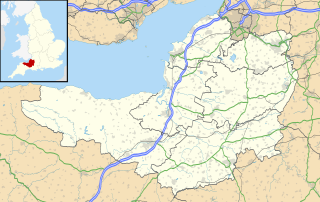
Cleeve Hill is a 15.1 hectare biological Site of Special Scientific Interest between Old Cleeve and Watchet in Somerset, notified in 1989.

Aegilops ventricosa is a plant species in the family Poaceae.
Philodendron ventricosum is a species of plant in the family Araceae. It is endemic to Ecuador. Its natural habitats are subtropical or tropical moist lowland forests and subtropical or tropical moist montane forests. It is threatened by habitat loss.
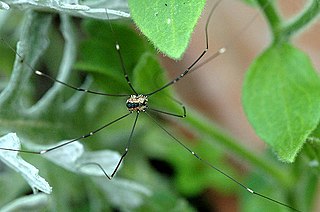
Leiobunum is a genus of the harvestman family Sclerosomatidae with more than a hundred described species. Contrary to popular belief, they are not spiders, although they share a resemblance. They are arachnids, in the order Opiliones, harvestmen. Species in Leiobunum tend to have relatively long legs compared with other harvestmen, and some species are gregarious.

Leiobunum rotundum is a species of harvestman. It is found in the western Old World.
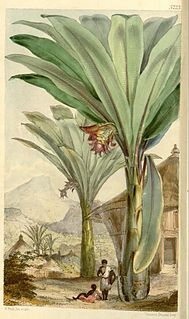
Ensete ventricosum, commonly known as enset or ensete, Ethiopian banana, Abyssinian banana, pseudo-banana and false banana, is an herbaceous species of flowering plant in the banana family Musaceae. The domesticated form of the plant is only cultivated in Ethiopia, where it provides the staple food for approximately 20 million people. The name Ensete ventricosum was first published in 1948 in the Kew Bulletin, 1947, p. 101. Its synonyms include Musa arnoldiana De Wild., Musa ventricosa Welw. and Musa ensete J.F.Gmel. In its wild form, it is native to the eastern edge of the Great African Plateau, extending northwards from South Africa through Mozambique, Zimbabwe, Malawi, Kenya, Uganda and Tanzania to Ethiopia, and west to the Congo, being found in high rainfall forests on mountains, and along forested ravines and streams.
Leiobunum townsendi is a species of harvestman in the family Sclerosomatidae. It is found in North America.
Leiobunum bracchiolum is a species of harvestman in the family Sclerosomatidae. It is found in North America.
Leiobunum bimaculatum is a species of harvestman in the family Sclerosomatidae. It is found in North America.

Leiobunum nigropalpi is a species of harvestman in the family Sclerosomatidae. It is found in North America.
Leiobunum relictum is a species of harvestman in the family Sclerosomatidae. It is found in North America.
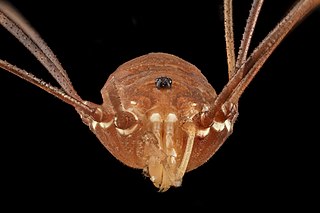
Leiobunum flavum is a species of harvestman in the family Sclerosomatidae. It is found in North America.
Leiobunum politum is a species of harvestman in the family Sclerosomatidae. It is found in North America.
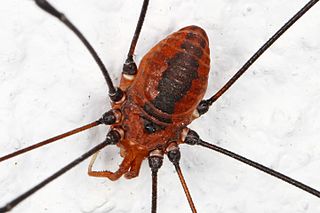
Leiobunum vittatum is a species of harvestman in the family Sclerosomatidae. It is found in North America.

Leiobunum aldrichi is a species of harvestman in the family Sclerosomatidae. It is found in North America.

Leiobunum calcar is a species of harvestman in the family Sclerosomatidae. It is found in North America.
Leiobunum euserratipalpe is a species of harvestman in the family Sclerosomatidae. It is found in North America.

Leiobunum verrucosum is a species of harvestman in the family Sclerosomatidae. It is found in North America.
Leiobunum uxorium is a species of harvestman in the family Sclerosomatidae. It is found in North America.










